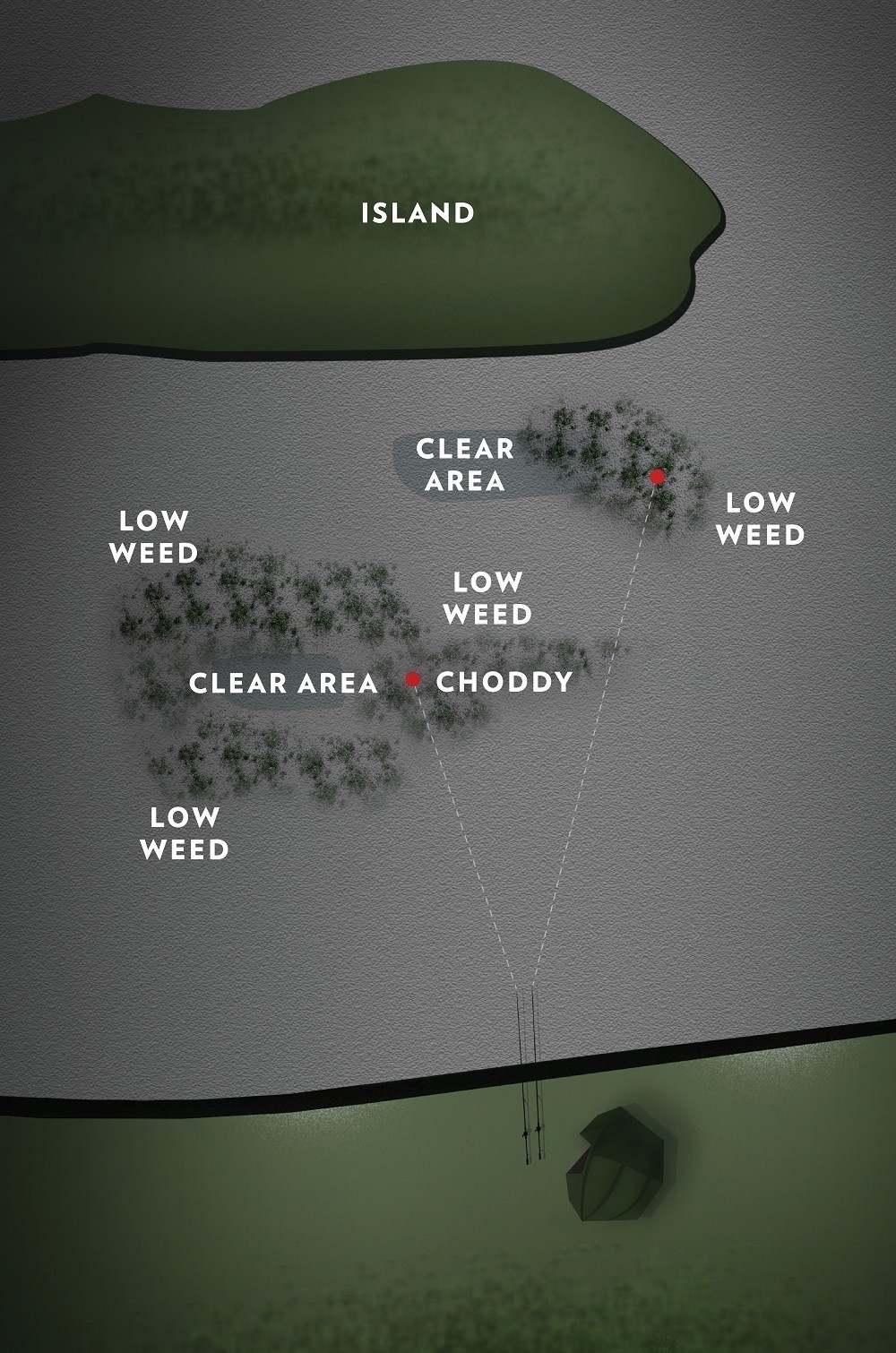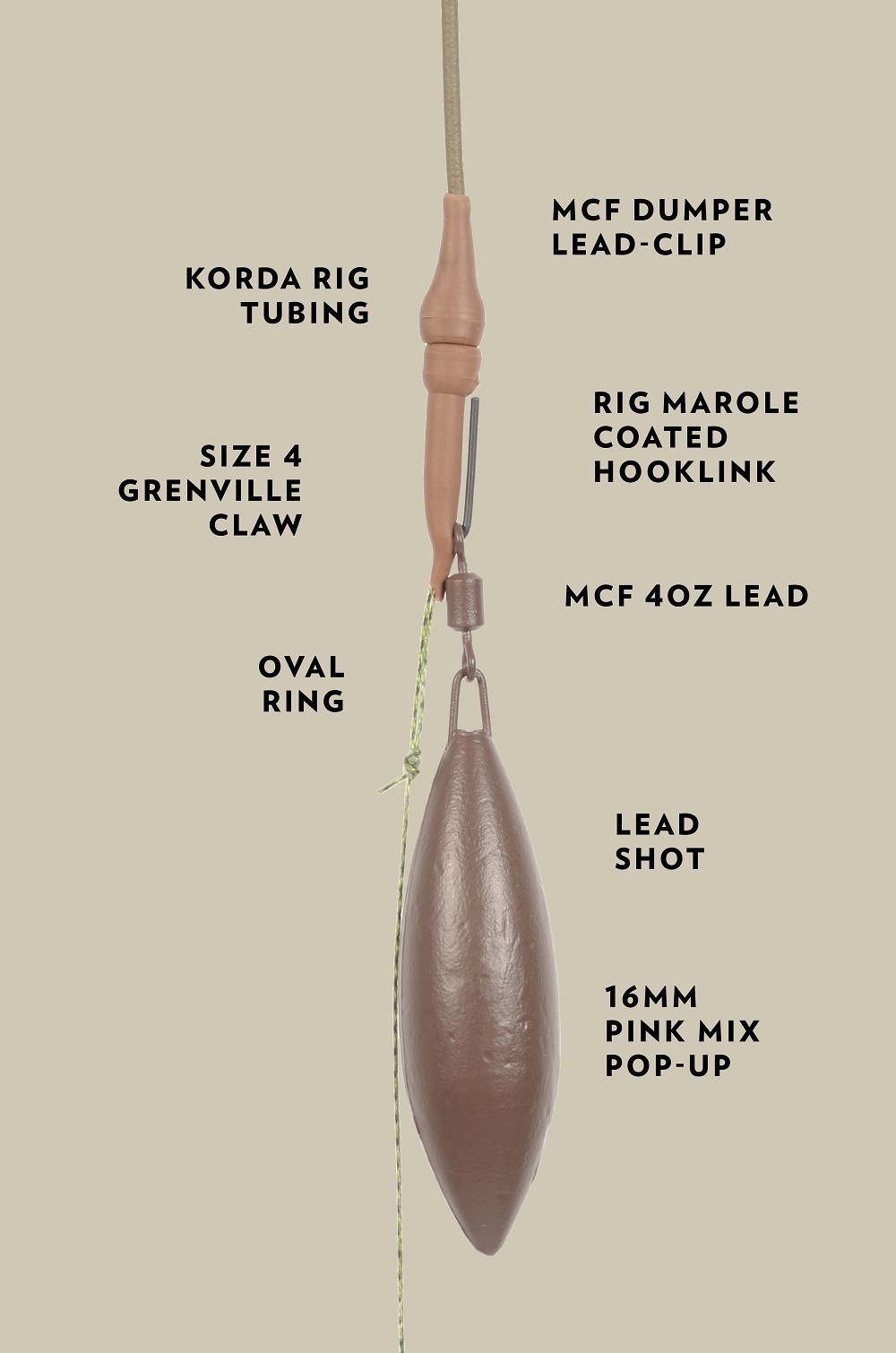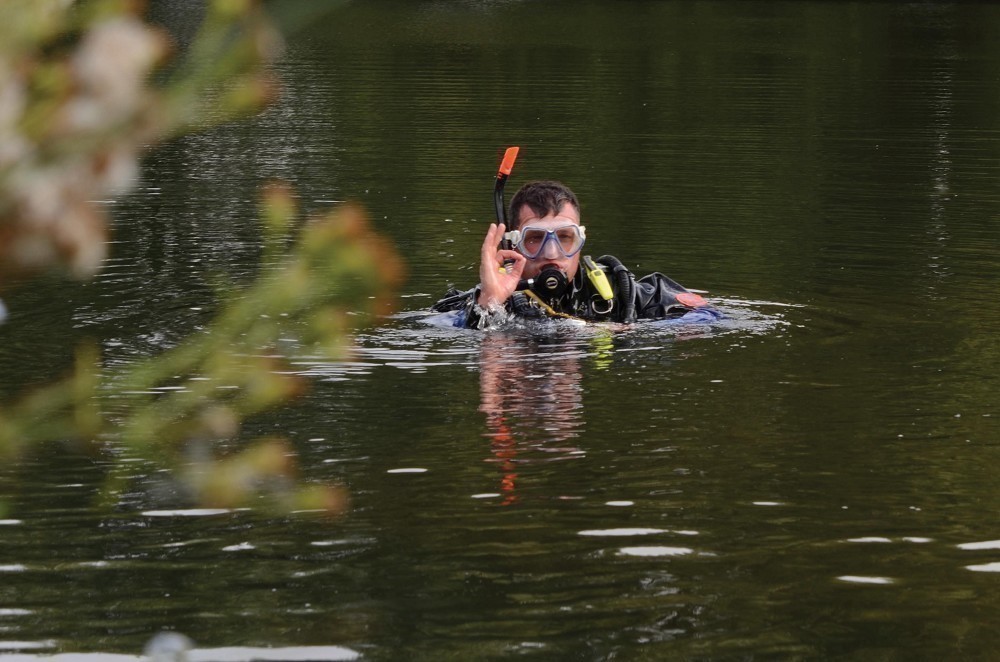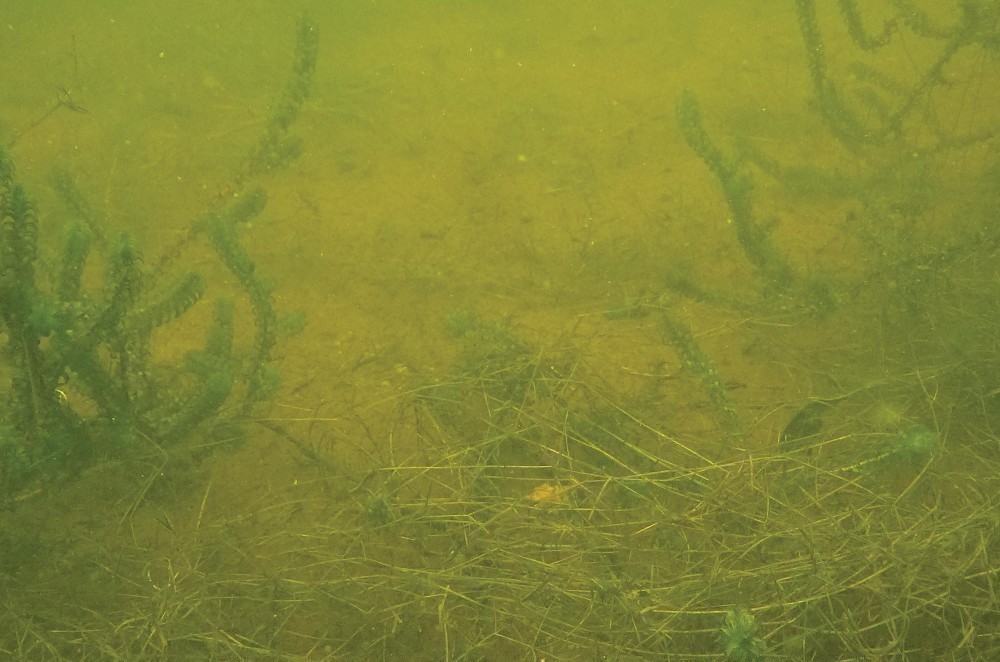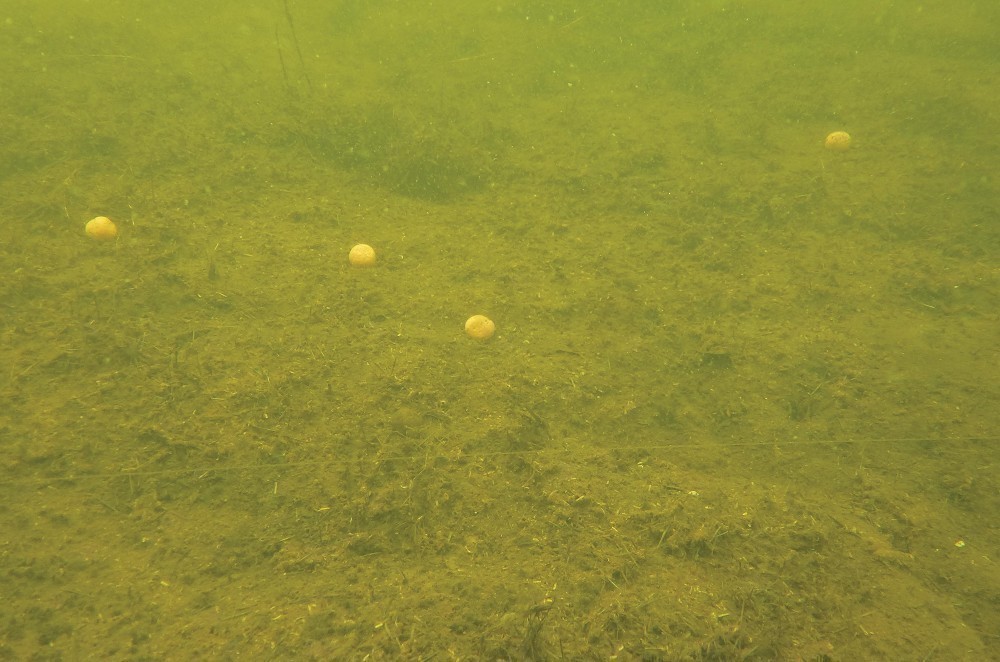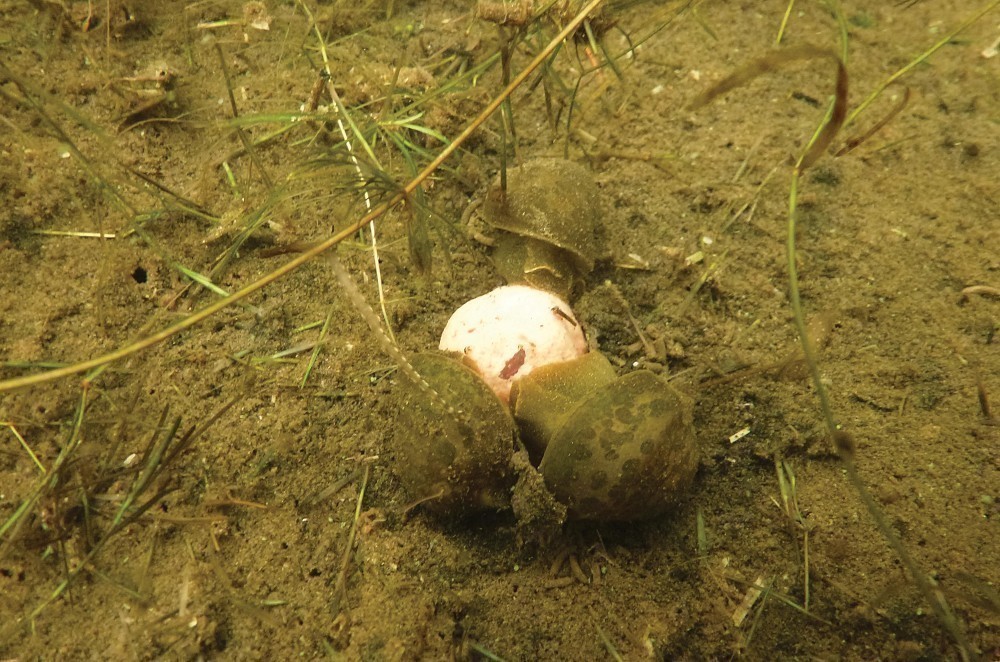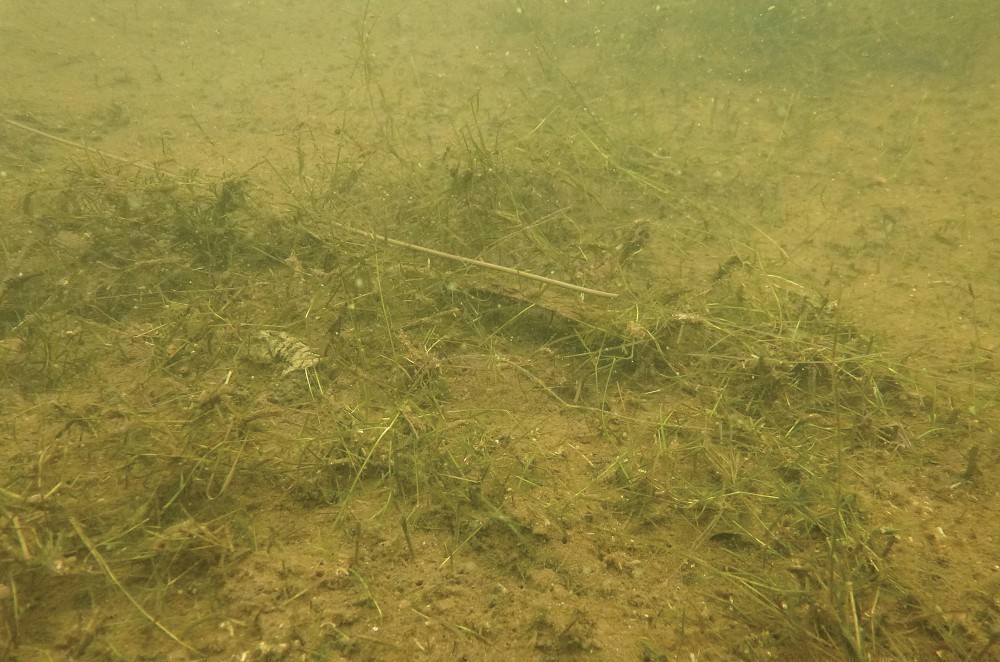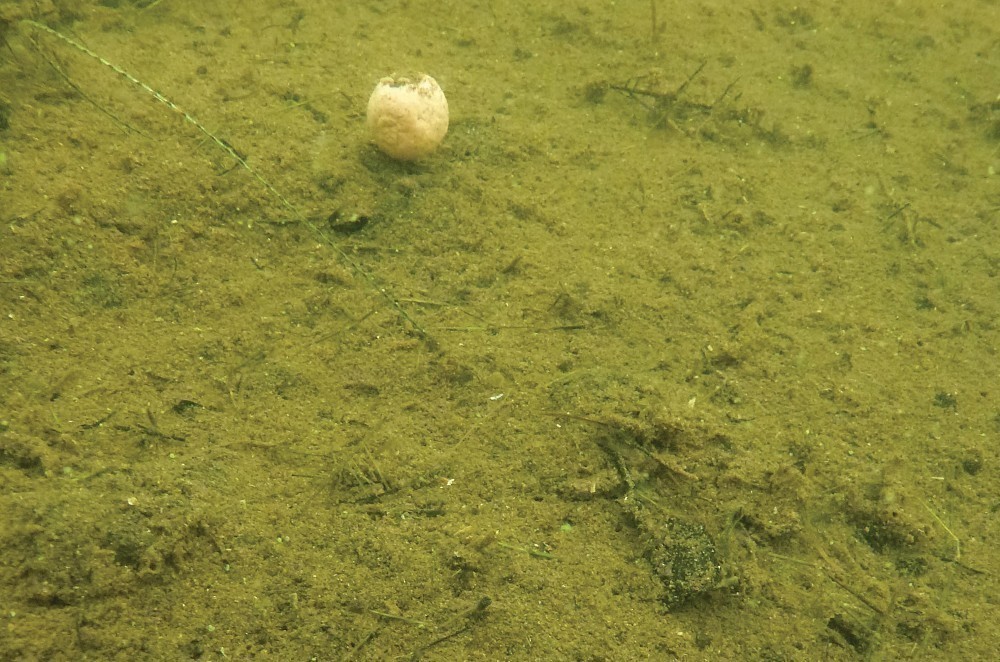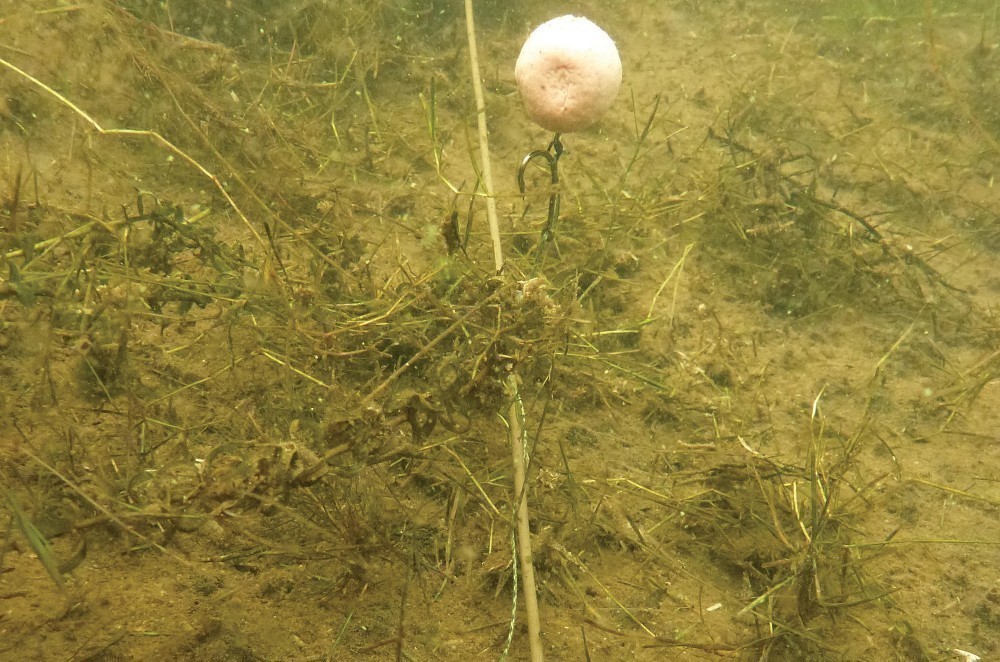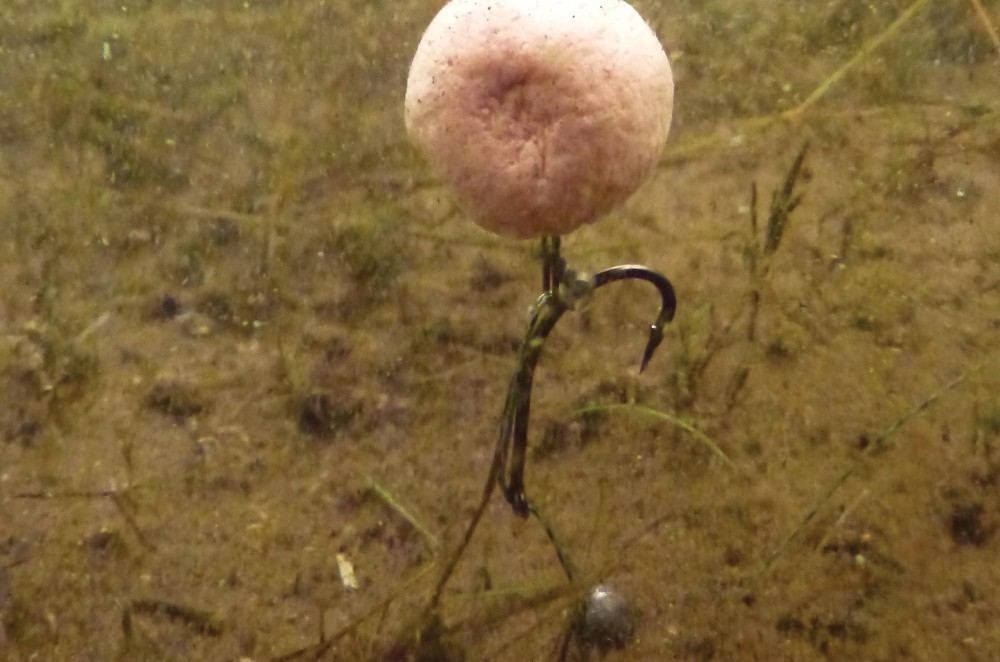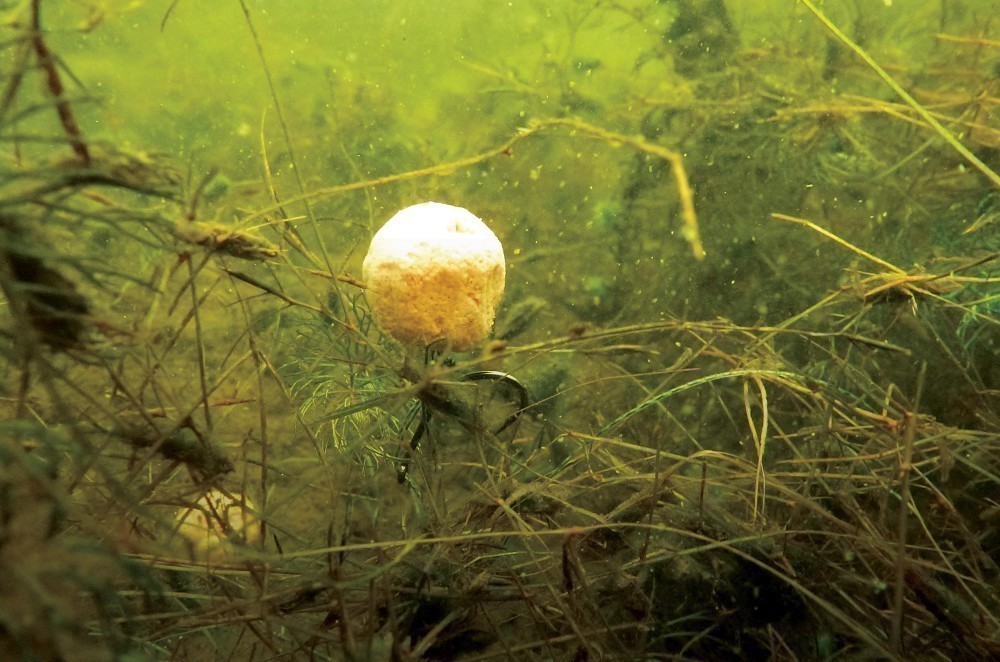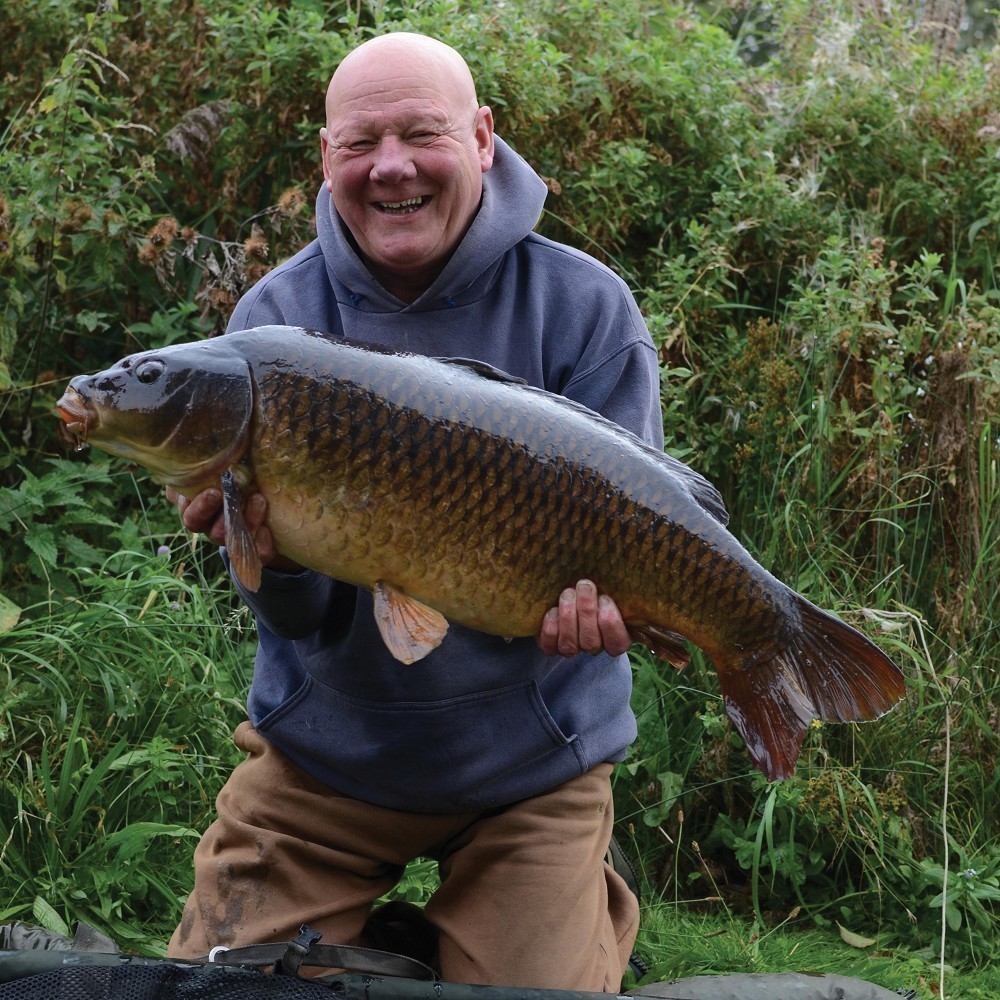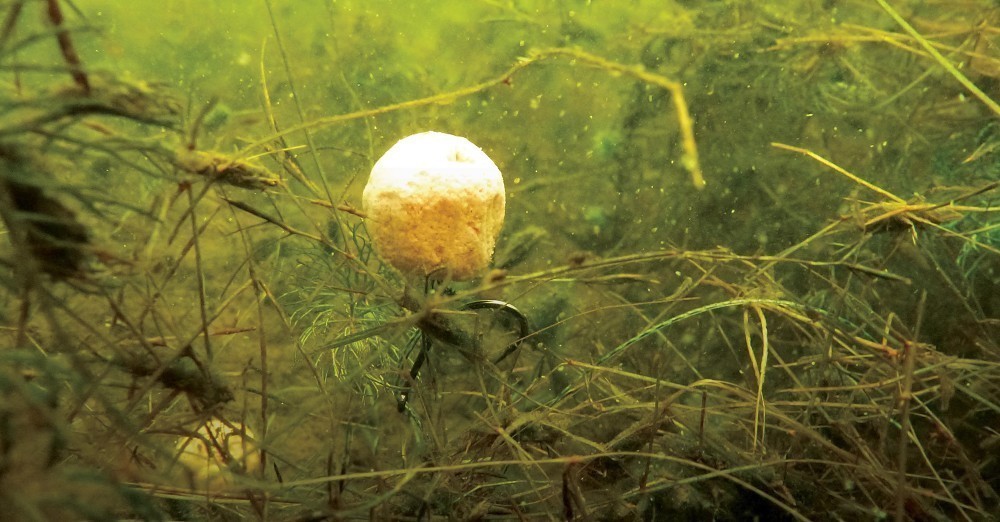
How to fish in weed and not use a Chod
We go Below The Surface with under-the-radar big fish angler, Dennis McFetrich
Dennis places a lot of importance on feature finding, baiting patterns and on line lay and how it relates to bite indication. And here we put him to the test in our Below The Surface feature.
This month’s location is at a stunning Norfolk syndicate called The Nunnery and in particular the much-whispered about ‘D Lake’. Dennis has fished the syndicate, including the other lakes on the complex in the past, but not in the last year or two and is looking forward to seeing if he still knows the ins and outs of where the carp will be, and more importantly, where they will be feeding. He explains that the key to most intimate waters is to simply locate, with pinpoint accuracy, exactly where the fish like to feed. Once you have found the spots they like to feed on, the game becomes a lot easier and so does catching them!
Having had a walk around the lake and finding a decent number of fish cruising around the back bay which is tucked away from the main body of water, Dennis decided this area offered the best chance of a fish.
He explained, “Quite often the fish come up here or to similar areas like this just to escape the angling pressure, therefore they may just be milling about and not actually feeding. Often you see people stalking fish in this mode and being unsuccessful, simply because the fish aren’t interested in food, they are just avoiding the pressure.”
Luckily for us though, this time it was different, the fish did seem to be on the feed with lots of bubbling and rolling giving away their intentions, so it definitely looked well worth a go! The only reservation Dennis had about the swim choice, which he explained while setting up his first rod, was that it’s a very shallow part of the lake, so it maybe easy to spook the fish, meaning the swim is a slightly risky choice, as although they are here now, whether they will stay or not is another matter.
Dennis continues to watch the fish and tracks their movements while setting up a marker rod to locate his chosen spots. Now usually anglers are looking for clear areas to present a bait but as Dennis has mentioned in his recent series of articles, he is rarely looking for somewhere that’s completely clean. He prefers an area which is a bit weedier wherever possible. Dennis makes a few casts with the marker rod and whereas some anglers maybe scared of using a marker in this situation, Dennis was very confident it would help and we even watched one or two fish actually swim up to the float to investigate.
I ask him why he’s selected these areas in particular and he explains that when the light is out from behind the clouds you can see a large clear bar running down the bay about halfway to the far bank. The fish seem to be travelling over a visible gravel bar and going roughly 100yds down to our left and then turning around and heading back-up again, sticking pretty much to the same route.
“I’m choosing to place my first bait just off the end of the bar in the hope that they drop down as they pass over,” he explains.
Dennis has found sparse weed and it’s exactly that kind of choddy bottom he’s after.
“I much prefer to fish over that than on the really clean areas. The fish feed much more confidently in light weed than a polished area and they have to work harder to search and dig out each bait, this makes the same fish much easier to catch!”
The bait Dennis has chosen to use is the MCF ‘Pink Mix’; it’s a bait that he makes himself and sells through MCF and it’s mainly made up of an exotic birdfood base mix with milk proteins and a couple of nice additives that are kept quiet but included at low levels to give maximum attraction.
“What you are left with is a bait that they will eat readily but which also passes through them very quickly making it a great all round bait.”
Dennis’s hookbait is a matching 16mm pop-up and he then baits up with around three handfuls of 16mm boilies spread over a wide area around each rod with the use of a catapult. Dennis spreads a relatively small amount of the bait over a large area in order to get the fish really searching for the bait and hopefully get them to make the mistake of picking up the hookbait quickly.
Looking closely at Dennis’s set-up, he’s opted for the same rig we have seen him use before and that he likes to use for a large proportion of his fishing. It’s a piece of green coated braid (this one’s made by Rig Marole) which he fishes Multi Rig style so it’s easy to change the hook when necessary. The important bit is a size 4 MCF Grenville Claw. Dennis explains his thoughts on hooks are that they should be super strong and sharp but not razor sharp like many companies are currently trying to achieve, which if too sharp are more likely to actually tear the fish’s mouth. That’s not only bad for fish welfare but means the hook is more likely to fall out. Once the Claws are picked up and go in, they rarely come out getting very good hook holds.
The hookbait is tied onto an oval ring and over-weighted with a lead shot to hold it down properly just off the bottom. This is fished with an MCF ‘Dumper’ Lead Clip which ensures as soon as the fish picks up the rig and hooks itself, the lead is instantly discharged from the clip and has no weight to aid it in its attempt to shed the hook. Above the lead clip, the set-up is finished off with a length of Korda Rig Tube which is threaded onto Dennis’s ‘Tiger Line’ – a super tough fluorocarbon main line that he uses for 95% of his fishing.
The second rod was armed with a pop-up and soon sailed over to the far side of the bay on a similar spot about 60yds out.
“They like to spend time during the day in this bay and I’ve had bites before from here as the night draws in, so fingers crossed something will happen.”
Dennis places a lot of emphasis on sinking the line properly, as he explained in last month’s CARPology (issue 104). To do this, once he has cast out, he un-does the bail arm and lets out line with the rod held up high. You can see the weight of the Tiger Line sinking from the lead back up to the rod tip. Dennis believes that to get good bite indication you need weight on the line, without any weight or with a very light bobbin, he claims it’s impossible to tell if a series of bleeps is a line bite or a pick-up, unless you get a full blown screaming take! The MCF ‘Rattlers’ allow Dennis to have that necessary weight which is needed for good indication but without it resting on the line. The Rattlers are balanced so if something moves the lead you get proper indication because there is enough weight on the indicator for it to register the movement. Some anglers get obsessed with their line lifting up in the water, but Dennis says that, “Once the line is down, you have thousands of tonnes of water pressure on that line, holding it down, so then the easiest way for it to move is to move through itself i.e. forewards or backwards not lifting up in the water.”
With the rods out, I sit down for a cuppa with Dennis and ask him what he thinks his set-up will look like underwater?
“I’m very sceptical about these kind of things and I know that our rigs aren’t all sat perfectly presented all of the time, that’s just not realistic. I’d like to think if a carp took the bait it would hook itself and if that’s the case, I’ll be happy.”
It’s been a strange year for diving. As a result of the rains that we had all the way through the early part of the year, the water has been quite chilly and I had to dive in hood and gloves up until June. It is a little more restrictive with regards to both taking photographs and also communicating between the surface and the shore so if possible I prefer to “go without”. It’s been lovely to dive without them over the last couple of months but as I dipped my bare head and hands into The Nunnery I soon realised that the water has cooled down significantly in the week before the dive and it was time to ‘glove up’ again… Booooooo! This may be why, on a lot of lakes, the growing season for weed has been significantly shorter this year and as a result on the venues that I have been fishing, the thick horrible stuff has been significantly less this year with the exception of one or two crystal clear venues. Algae is a different thing though and it seems to have had a good year. Both filamentous and suspended algaes have been more prevalent and I reckon the fact the weed growing season has been shorter has worked in algaes’ favour. The Nunnery, I’m told, is usually gin clear but even from above the water we could see the strands of algae that were coming up off the bottom and will soon die off. It’s like lots of small particles in the water and is known as ‘scatter’ in the underwater photography world. Fortunately it doesn’t cause too much of a problem taking photographs on the bottom as you’ll see from these shots as it tends to stay up in the water and away from the bottom foot, but it can cause problems with lateral visibility up in the water. This was indeed the case when I came to the second dive that day but more of that later.
The first rig was pretty easy to find. Sat in about five-feet of water just off the big clear patch, I finned out there and once in the zone could see Dennis’s loose scattering of free baits pretty easily. They looked light pink underwater but what was even more interesting was that, having been in the water for only a couple of hours before I went down to investigate, a lot of them were covered in snails. At least half of his freebies had a snail sat on them and one bait actually had three snails competing for the bait. Being snails they weren’t scrapping in the “tear up down the pub sense”, more of a slow and hefty “all in wrestle” but nevertheless they wanted that boilie. Interesting! They were quite big buggers too; almost as big as the baits themselves rather than little pea-sized things that I usually see.
Onto the presentation, the line lay was pretty good, sitting down over the low-lying weed that was dying off. There was some very light clumps of Canadian and a reasonable spread of crowfoot but interestingly the crowfoot was already on its way out with a lot of it laying down on the bottom in a collapsed carpet. It’s late September as we are writing this and I would usually expect it to start going soon but not to have dropped so quick. In fact, the locals said that only a week or so ago it was hefty and there was no algae. At the time of the dive, having had a short cold snap the week before, it seemed the weedy hierarchy has been reversed and it will not be very long at all before it’s all gone and we are back to barren bottoms.
Dennis’s spot was not what I expected. I expected weed, and whilst there was a bit around, his first rod was smack bang-on a nice clear area of silt-covered sand with a bottom bait presented perfectly on it. The last few inches of his tubing had sunk into the silt, as had the lead and clip system and all that you could see within six-inches of the bait was the bait itself and a loop of very fine hooklink material that had lifted off the bottom. A small blob of putty on that hooklink would have taken it down and hidden it from view but speaking to Dennis when I got out of the water, it isn’t something that bothers him so he was well happy with Rig 1.
Free baits across both rods were a loose scattering of boilies with the hookbait a single one of the same variety and no stringer, thus mimicking the free offerings. They were fairly tight in the general area but didn’t form what we would class as a ‘bed’.
Dive 1
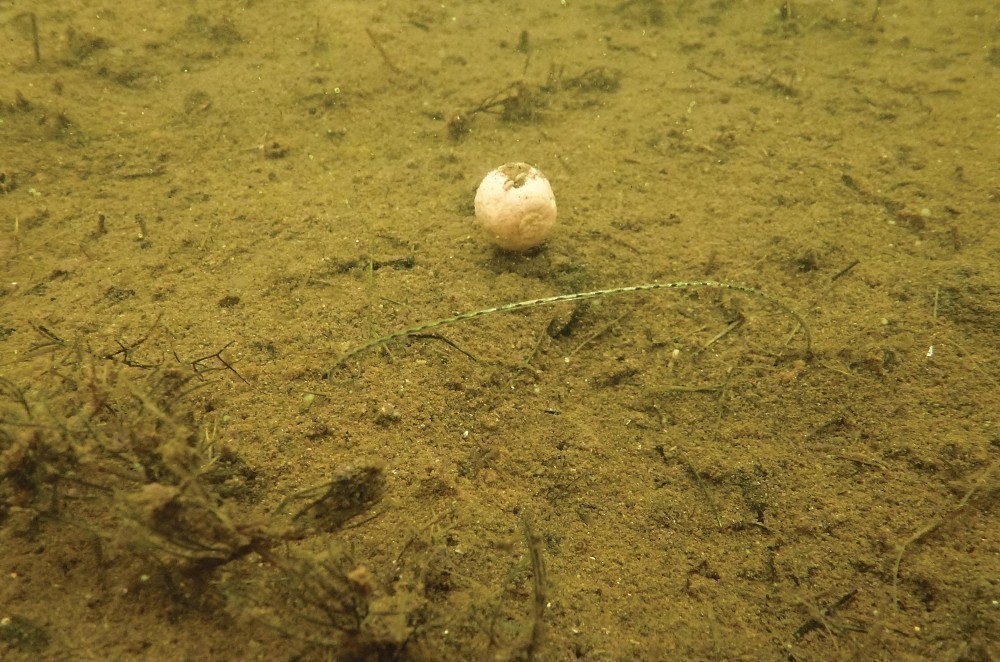 The hooklink was the only thing you could see and a bit of putty would have got that on the deck and totally out of the way
The hooklink was the only thing you could see and a bit of putty would have got that on the deck and totally out of the way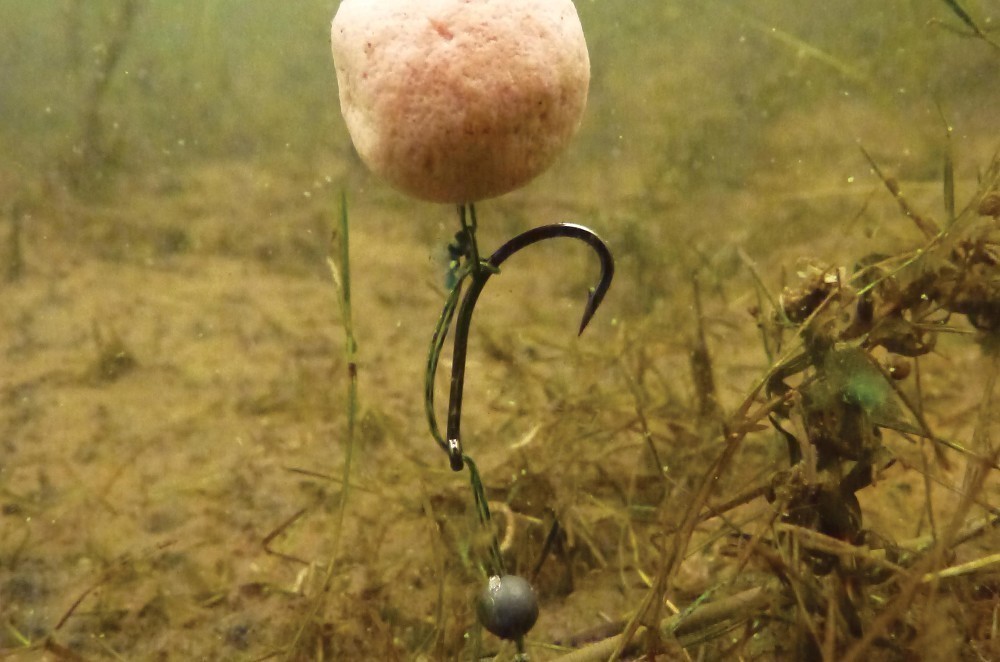 Rig Two unfortunately ended up in a bit of a tangle, as a result of being drilled in without hitting the clip
Rig Two unfortunately ended up in a bit of a tangle, as a result of being drilled in without hitting the clipRig 2 was an almost identical presentation but this time he used a pop-up rather than a bottom bait. When I saw him cast, he drilled it in with no feather or clip and I had an inkling that it may well be tangled. Upon investigation it was. Not seriously as you can see from the presentation, but the hooklink had done the usual thing that I have seen time and time again whereby on a rig that is not clipped or feathered, the hooklink twists back up around the leader, or in this case, tubing, as it enters the water. The pop-up shot acted as the buffer on the twist and as strange as it may sound, the rig looked good on the bottom and despite the tangle was definitely presentable. I describe this type of tangle as a ‘Confidence Chod’. The angler ends up fishing a couple of inch hooklink Choddie style, but when a fish picks the bait up or when the angler reels in, the hooklink straightens itself and the majority of the time you are none the wiser when the rig comes back to shore. The absolute giveaway if you cast in this way is that there maybe a twist around the clip. If the hooklink is twisted I can absolutely guarantee that you were tangled on the bottom. If it wasn’t and you cast in without feathering/clipping/bagging, you still almost certainly were.
To be fair, a tangle like this isn’t always fatal to your presentation. I know a number of anglers, some exceptional ones, who fish in this way and their catch-rates cannot be questioned, and I will say that I thought this rig still looked quite good. The big fella wasn’t happy though and had a re-cast so we let it settle before getting back out into the water for a re-check.
It was later in the afternoon now and although you can’t tell in the photographs (I put that down to the incredible skills of an awesome photographer!) the light was fading. Cloud had built up a little and the visibility underwater was getting trickier and herein lies the problems of which I spoke earlier. I started following Big D’s main line, (which incidentally is John Llewelyn’s Tiger Line) and lost sight of it part way over. ‘Never mind’ thinks I, ‘I’ll find it further on’… but I couldn’t! I swam forwards, backwards, across and quartered the areas but I simply couldn’t find the rig. I could see pretty well, but the line wasn’t there. I popped up to make sure that he hadn’t reeled in, confirmed he hadn’t, got some hand directions off the ‘Ology crew on the bank with some choice words of encouragement and then went back down… Then had to pop back up again asking Dennis to lift up his line so I could actually get to it and follow it back. With me about six-inches off the bottom, following something that I knew was there but couldn’t really see properly I eventually got to the tubing, found the rig and saw that after the feathered re-cast it was in fact perfect.
All parts of our carp fishing are important but I think that line is one of the major issues that prevent carp from feeding on your spot, and I’ve had problems locating Tiger Line both times I have dived on it. Coincidence? Inexperience? Ineptitude on my part? I don’t think so… it is quite simply good, and I’m not being commercial here but Tiger Line and, to be balanced, Fox Illusion are in my humble opinion, streets ahead of the other fluorocarbons and neck and neck as the two best lines out there if you want a stealthy set-up. As the water cools down and clears, the carp get a bit harder to tempt and the weed dies off making it easier for us to lay line down on the bottom, it’s getting to fluorocarbon time of year and either a leader or a full length of Tiger or Illusion is a distinct edge.
I’d like to mention the way Dennis slackens off at this stage, as this too has an effect on your line lay. Anglers that drop the rod and then slacken off simply put a big droop in between them and the first weedbed they get to. If the line is not slackened off properly then any slack will only serve to reduce indication. Dennis’s technique is to hold the rod up and slacken off so the line nearest the rig sinks first. This is of course the best way of laying down the line if you intend to fish slack.
Dive 2
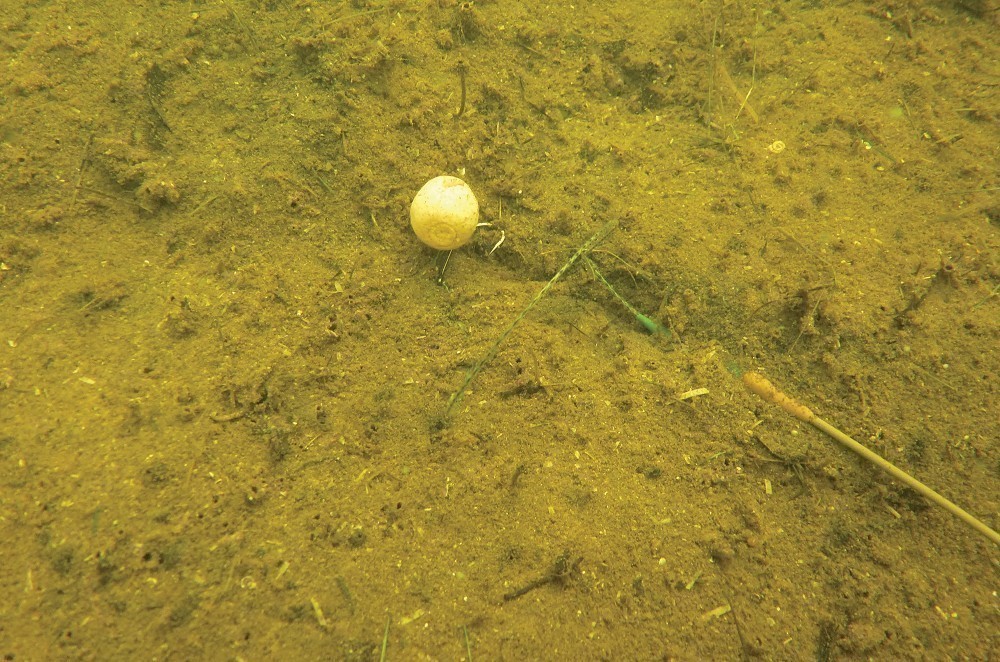 The morning after with Rig One. You can see that the coot has lifted the rig up and dropped it again
The morning after with Rig One. You can see that the coot has lifted the rig up and dropped it again 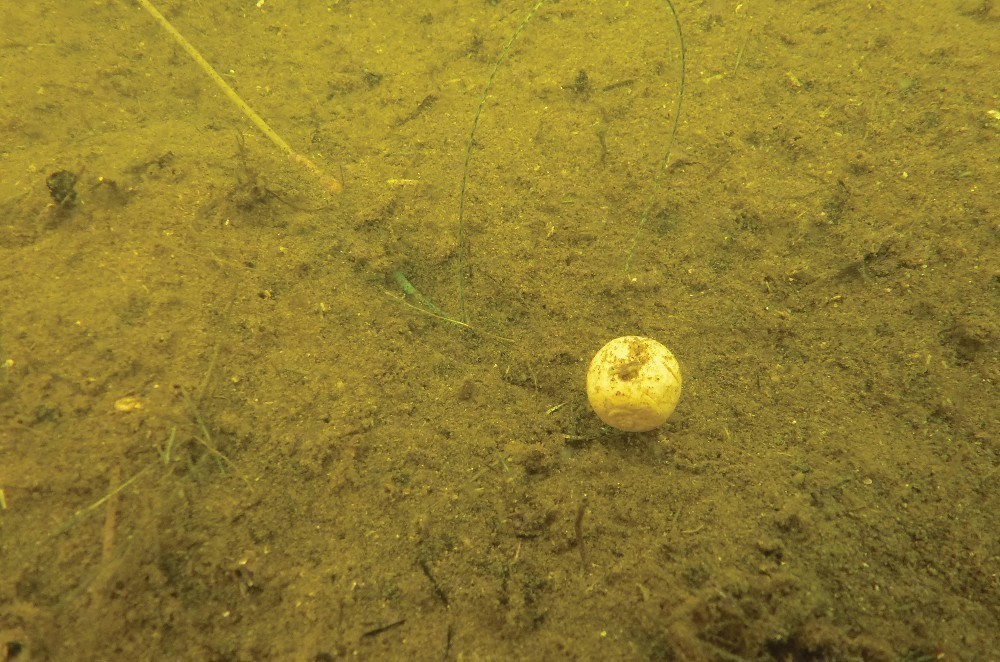 When the coot dropped the bait, the hooklink looped up again. Almost every braid does this and putty is the answer
When the coot dropped the bait, the hooklink looped up again. Almost every braid does this and putty is the answer Dennis's thoughts...
“We have just finished Dive One: what did you think of the outcome and the photos from the first dive?”
“It was really interesting. The hookbait on my right-hand rod was still fishing and sat up proud but the rig had tangled around the lead clip and tubing. This obviously isn’t perfect presentation and Hughesy’s verdict was that it’s a common problem when the rig isn’t feathered properly for it to tangle like this on entry. Therefore, never one to be too old to take advice, I’ve re-cast that rod and ensured this time I feathered it down in the hope it won’t tangle. As we’ve seen from the underwater snaps, it worked a treat.
“So the traps are set for the night now are you feeling confident something will happen?”
“I know the rigs now look spot-on thanks to Hughesy. There maybe the chance of something happening tonight, though my gut feeling in this situation is that it maybe more likely in the morning. The fish will head out into the main lake for a feed and may still be picking up bits and pieces in the morning as they are heading back in. The fish probably won’t be ravenous after their night time feed but it maybe a good opportunity to nick a bite.”
The morning after, back to Hughesy
Nothing occurred through the night other than a coot picked up Dennis’s left-hand rod then dropped it again so it would be interesting to see what the bird had done to his presentation. An hour or so after first light he had a pick-up on the right-hand rod and bagged a cracking mid-twenty common so it too would be interesting to see what it had done to the swim and the free baits in the area. He cast back out again, and after bite time had passed, I got the kit back on and went back out into the pond.
Starting with the left-hand rod I could see that things were virtually the same as the day before and the carp had almost certainly not visited the area, or if they had, they didn’t feed. There were still freebies in the area and the rig was in virtually the same place. It was still presentable, and you can see from the pictures the difference the coot pick-up had made to it.
Moving to the right-hander, Dennis had put it a little further out and this time it had landed in weed. It had got caught up on a fair clump and, whilst he does like to fish in weed, to me the presentation was compromised. There were still a fair number of baits around but I think some of them were from the night before and the “top up” baits had added to the spot, once again confirming that the hookbait isn’t the last bait to be picked up as many people think it is.
Whilst down there, I carried out the usual indication test by picking up the hookbait and moving steadily away from the rod. I felt the strike just before the rig had moved from fingertip to elbow, which was slightly better than usual, and I put this down to his line lay.
To conclude and evaluate Mr. MCF’s set-up, it’s clear that it worked as he caught a fish for us. He catches loads, in fact, so he can’t be going far wrong in what he does. Personally I would have put some putty on the hooklink to sink it down, but other than that, his set-up, line lay and indication are bang-on.
Dennis's final thoughts...
“I was pleased to catch, as that’s always the aim of the game! I think the importance of casting technique that was highlighted yesterday when I first cast out my right-hand rod and it was slightly tangled is definitely something to bear in mind. Using the feathering of the line or actually hitting the clip to turn the rig over is one of those little highlighted tips I’ve learnt that make all the difference. The proof of the pudding is in the eating as they say: I re-cast that rod yesterday and that was the one I got the take on this morning. Like anything, I strongly believe fishing is a constant learning curve and this was really helpful.”





